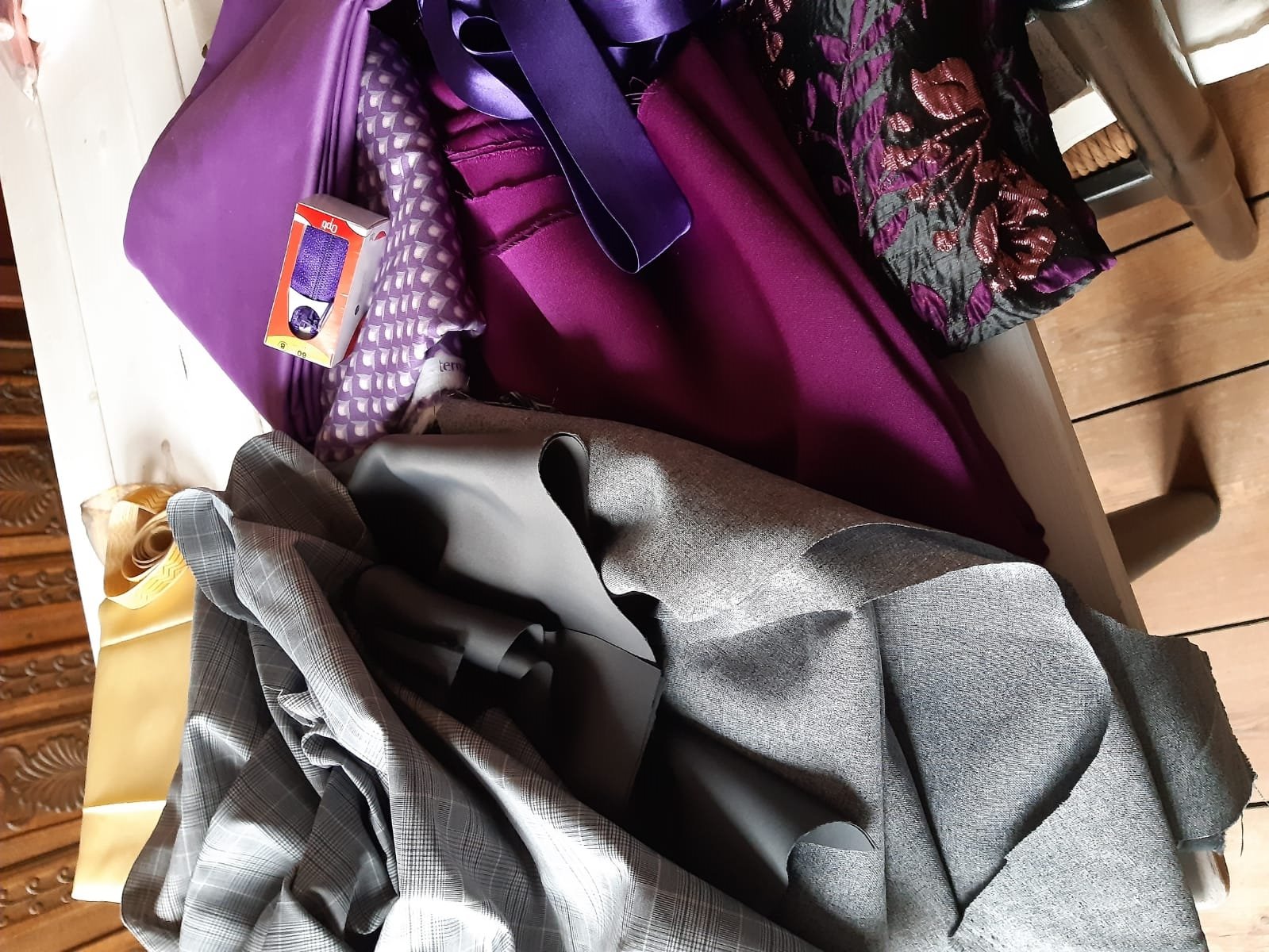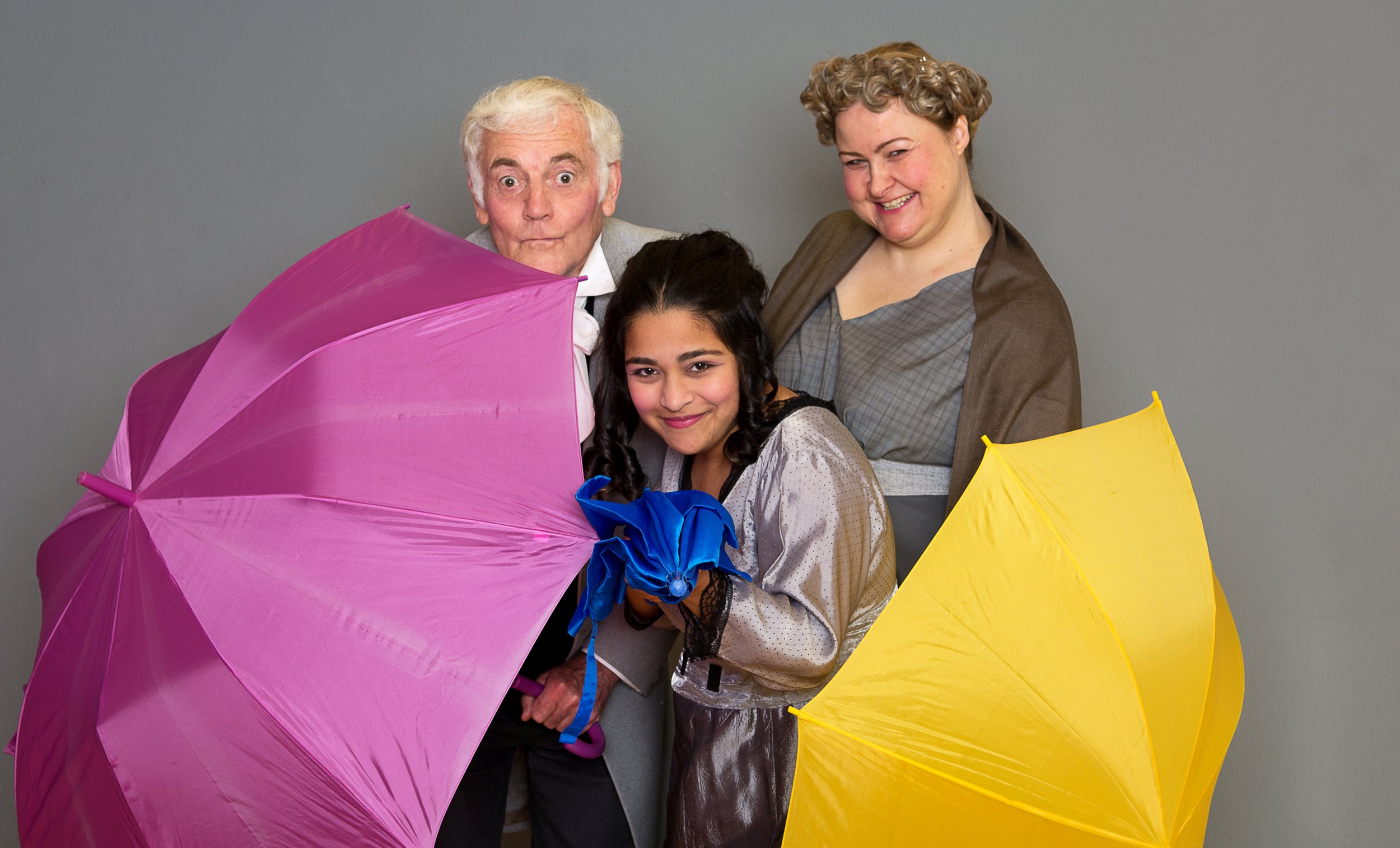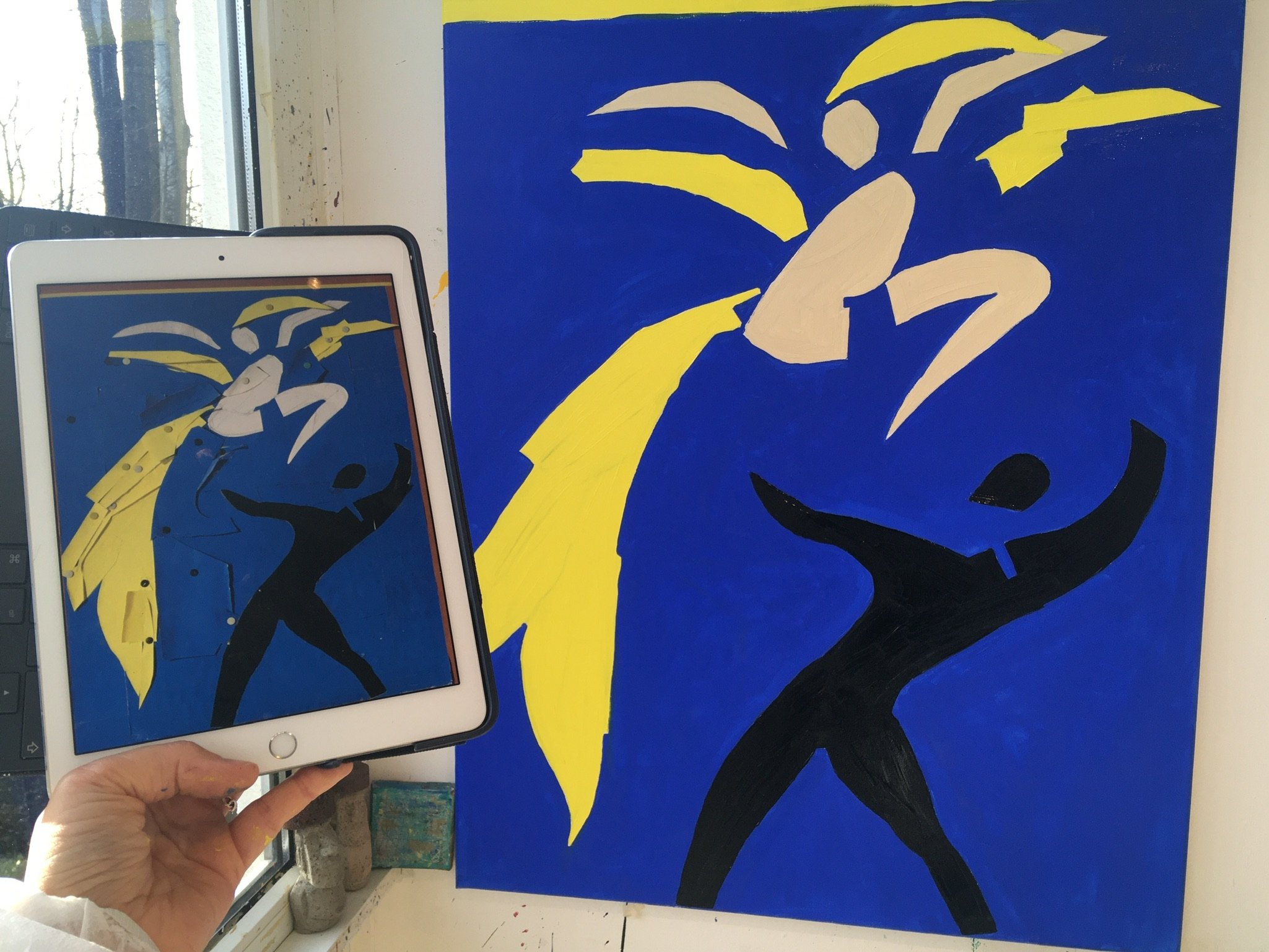How the stage for And Then There Were None is designed
„I’ve been a huge Agatha Christie fan for ages. So, when Lexi told me she was planning to direct one of her pieces, I immediately told her I wanted to design the set,” recalls Martin Scheibe. “What I like about her as a writer is the clearcut simplicity of her stories. At the same time, my goal is to stay away from creating a too ‘cosily English’ stage. We’re going for a bold design in mainly black, grey, and white.” And some surreal surprises, he adds.
Creative back and forth
A sketch of Agatha Christie by Martin Scheibe
On a visit to his studio in Altona (Martin is a professional costume designer, artist, bag designer, and a generally creative soul, hence the need for a space to work on his numerous projects), his enthusiasm is indeed palpable. A pencil drawing of the stage shows the first details: a large double door leading out of the lonely villa, various seating opportunities for the 10 characters of And Then There Were None, and, of course, a bar.
Director Lexi von Hoffmann, who is calling in on this rainy December day, remarks that in the draft, said doors might be positioned too far “stage right”* to obstruct the theatre’s backstage staircase. No problem, replies Martin, and thus the doors are moved. “It’s a creative back and forth between Martin and me, which I love,” says Lexi. “In the beginning, we talked about the story arch. I mentioned a few things the story requires, and then he came up with his own ideas.”
The first draft
Which brings us to the 10 miniature soldier statues that play an important part in the play, always indicating the most recent murder by falling off a shelf, one by one. “Regular china figurines like the script calls for would, firstly, be too expensive, and, secondly, too small to be visible from the audience,” Martin explains. His genius idea: using Ken dolls (you know, Barbie’s boyfriend; or not-boyfriend) dressed in uniforms sewn by the set designer himself. “I’m really looking forward to making those!”
Second-hand shopping
The doll idea sets us off to a quick stop at the second-hand shop “Stilbruch” just around the corner. While the toy section doesn’t carry any Kens at this moment, it can’t hurt to have a look at the rest. A large floor vase and some dried palm leaves to create some bizarreness, perhaps? Lexi agrees, and so, the joint choosing begins before the two of them poke their heads in the clothes department since Martin has offered his support to costume designer Barbara.
Would these work on stage? Lexi and Martin think so.
Even in the hustle and bustle of the store, it’s obvious that the director and stage designer share a very collaborative approach. “In the case of And Then There Were None the setting plays a central role. The action takes place in one room, which is why the atmosphere of the set will largely inform the audience of what goes on,” Lexi explains.
How exactly that is done, you will have to see for yourselves between 14 and 24 February at Theater an der Marschnerstraße. More here.
Madeleine Lange
*a theatre term used when describing the right side of the stage from the perspective of the actors on stage

























